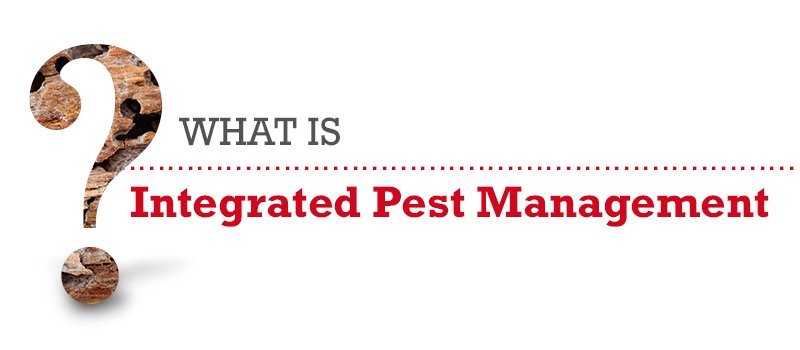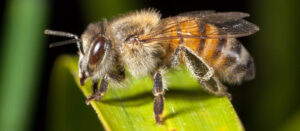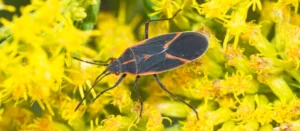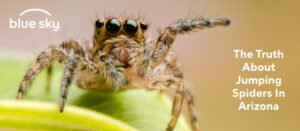$50 OFF New Residential Customers. Learn more
What Is Integrated Pest Management?

Integrated pest management, or IPM, is an approach to pest control that focuses on the long-term prevention of pest infestations by using a variety of control methods instead of a single blanket pesticide application. These control methods can include:
- Access denial and exclusion: Stop pests from entering homes. For example, fixing weather stripping to stop easy access into a home or building.
- Habitat modification: Reduce the availability of food, water, and harborage for pests. For example, trimming landscaping back six inches from the building and cleaning up leaf litter.
- Physical and mechanical controls: Block access to home using barriers and the use of mechanical traps.
- Sanitation: Ensure the area is clean. For example, making sure that a commercial kitchen is clear of food debris that would attract pest activity.
- Judicious use of materials: We will use pesticide products only when absolutely required, and use only those that offer the lowest potential impact to humans and the environment but the highest impact on pests.
A key element to IPM is continual monitoring so that a pest control expert may proactively determine the type and severity of an infestation, or determine if conditions are conducive to a potential infestation.
Using these findings, we conclude which control method or combination thereof will most effectively eliminate a current infestation or prevent a future one. Generally, materials like pesticides are used only after it is established that they are needed in combination with the other control methods.
Pest Control vs. Pest Management
Purdue University’s Urban and Industrial Integrated Pest Management course says that the terms “pest control” and “pest management” are often used interchangeably both by the public and industry professionals. However, there are specific and important differences to the two approaches.
- Pest management is properly defined as the detailed process a pest professional follows to address current or possible pest infestations. This process includes four steps: inspection; determination of pest thresholds; application of pest management procedures; and monitoring pest populations, reapplying procedures as necessary.
- Pest control generally refers to the one-dimensional material approach, i.e. the use of pesticides, to addressing pest challenges.
The Complex Requirements of Commercial Infestations
Food-processing facilities, hospitals, high-rises, restaurants, multi-tenant properties, and other commercial properties often have challenges that require a multifaceted approach to pest management.
An effective IPM program, however, can be customized to target the needs of each specific commercial client.
IPM in Action: A Blue Sky Case Study
The Challenge A client that manages a high-rise building in the Phoenix area had cockroaches in some bathrooms. The client had a pest control provider, but was still experiencing cockroach activity and had received complaints from tenants.
The Approach Blue Sky proposed an IPM program, which was new to the building, that fully embraced the four steps of pest management outlined above.
Step 1: Inspection
We thoroughly inspected the bathrooms and other areas of the building where the cockroaches had been seen. We identified the cockroach as an American cockroach, which is also called the sewer roach. The identification gave us specific information as to where the cockroaches were likely coming from. /
Step 2: Determination of Pest Thresholds
For our client, the cockroach activity threshold was low. They wanted minimal to no activity since it was disturbing to tenants. In addition, the building was a LEED building, which imposed strict guidelines on when and how materials could be applied in and around the building.
Step 3: Application of Pest Management Procedures
We determined that the way the American cockroaches were entering the bathrooms was most likely via the drains. The drain openings were fairly large, allowing any size of American cockroach to enter the bathrooms. We procured a mesh liner that minimized the opening of the drains, but still allowed proper drainage.
Step 4: Monitor Pest Populations and Reapply Procedures as Necessary
Blue Sky keeps detailed records on pest activity by location, so we have accurate, real-time information to determine the effectiveness of the current control approach. We also use this information to determine if we need to reapply procedures or introduce new procedures to gain control over an infestation. Over several months, the appearance of the American cockroaches in this client’s bathrooms returned to zero.
Related Posts

Killer Bees in Arizona? Understanding Africanized Bees and How to Coexist Safely
You’ve likely heard the term “killer bees” used to describe Africanized bees in Arizona, but did you know this nickname…

Red & Black Intruders: Meet Arizona’s Boxelder Bugs
Boxelder Bugs in Arizona If you’ve ever stepped outside and spotted a cluster of black-and-red bugs crawling on your porch…

Jumping Spiders in Arizona: Harmless or Hazardous?
Jumping spiders in Arizona might be small, but they can certainly give you a big surprise when they suddenly appear…